
West Coast Rock Gardening
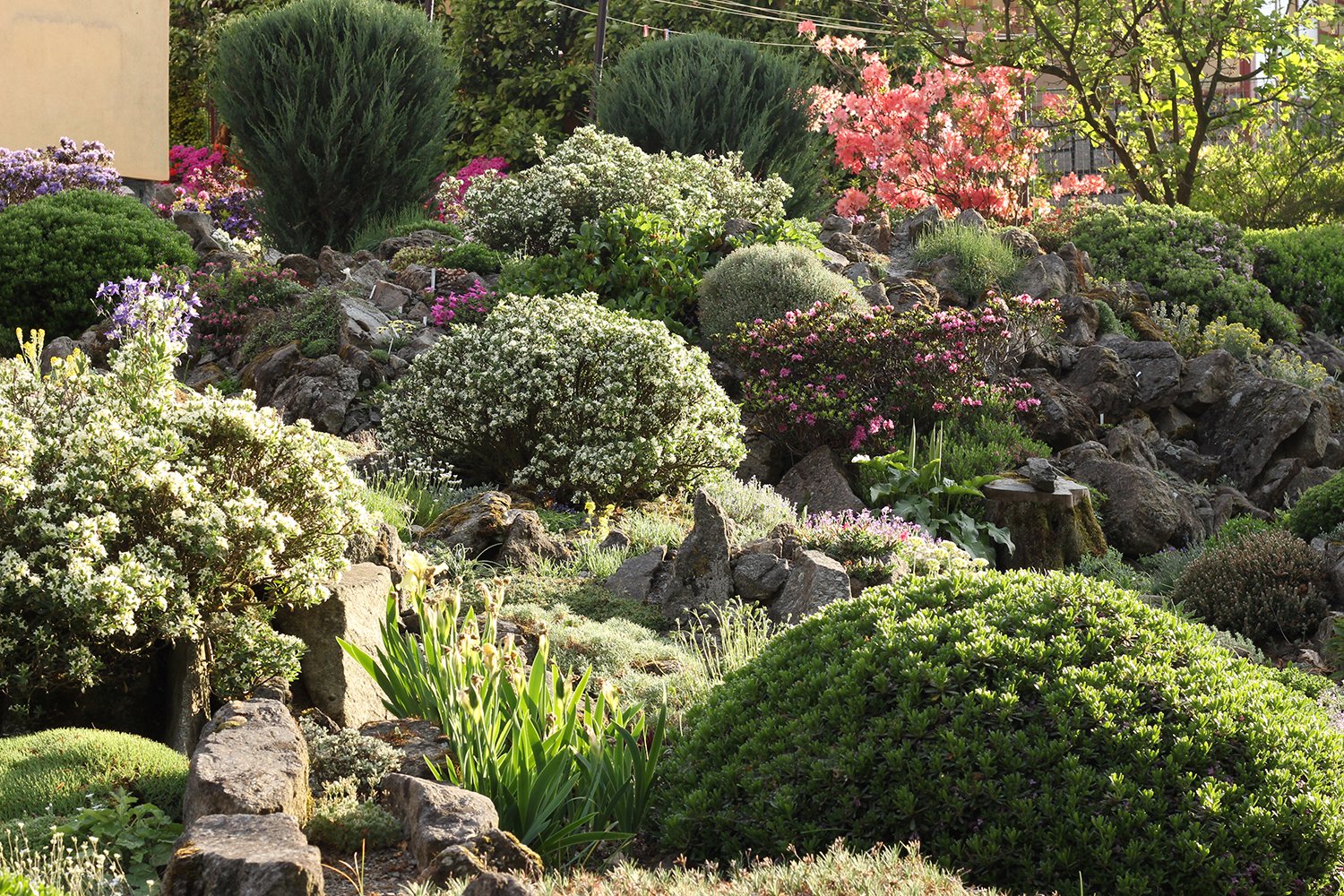
Contributor
- Topics: Inspired Gardens and Design
Fall 2022
Foreword by Paul Spriggs
Rock gardening has historically been popular in the Pacific Northwest. Many European immigrants brought their rock gardening culture with them from the old world (where our brand of rock gardening was developed). It didn’t hurt that the mountains and other rocky places are always nearby, both in the old and new world, providing the inspiration needed for us to emulate natural scenes, and to bring them into our gardens. The home rock garden developed over the past century as an aesthetic garden feature, with traditions coming and going as new innovations and techniques developed.

Enter the crevice garden. This recent rock garden style has proven to grow a wider range of plants in a wider range of climates than traditional rock gardens, putting the Western regions, with our multiple favourable climates for growing rock plants, in a perfect position to be a hotspot for this new style. Well-known PNW horticultural organizations such as Heronswood Gardens, Cistus Nursey, and Far Reaches Botanical Conservancy have already built crevice gardens as educational tools, and as a means of conserving potentially at-risk native species. Further south, the Bay Area boasts two public crevice gardens at Tilden and Lake Merritt. Southern California, however, is still relatively unknown territory for crevice culture. Traditional rock gardening started with arctic/alpine mountain plants, which don’t grow easily in desert and subtropical regions. What makes this new frontier so exciting is that there are no doubt vast numbers of plants, both California native and exotic, that would be well suited to crevice culture in Southern California. It’s just a matter of time.
Keys to success with the crevice garden is in the rock placement, which creates crevices that force roots deep into the sandy or gravelly mineral soils that offer perfect drainage and low organic nutrients, conditions that most rock plants require. These gardens offer more to the modern-day gardener than just a pretty horticultural challenge. With the pressures of modern life, in which both time and space are at a premium, crevice gardening offers a low-maintenance, timesaving alternative, and can be constructed in even the smallest of containers, such as troughs that require very little space. As the plants tend to be quite dwarf, even a smaller planter can host a rich collection of plants.
Nothing is more satisfying than successfully growing some of our most beautiful native plants. Three of my favourites are cushion buckwheat (Eriogonum ovalifolium), cliff penstemon (Penstemon rupicola), and the queen of the rock garden, Tweedy’s lewisia (Lewisiopsis tweedyi). All three of the above could be candidates for what could be the crevice garden’s most important modern-day application: a drought-tolerant xeriscape. Yes, a properly constructed crevice garden allows us to have a completely unirrigated garden if appropriate plants are chosen, giving gardeners one more tool for horticultural success in the face of climate change.
Excerpt from The Crevice Garden by Kenton Seth and Paul Spriggs. Copyright 2022 Kenton Seth and Paul Spriggs. Reproduced by permission of Filbert Press Ltd.
Chapter 4:
HOW A CREVICE WORKS
Where plants grow in crevices or rocky places in nature, they enjoy better exposure to light and airflow. Rocky sites are often sloped or well drained, shedding precipitation very effectively and making them drier than flat places in the same climate. Water that is absorbed by the land surface will be displaced by the rocks themselves, forcing that water deeper. In a rocky place, the surface dries but the subsurface may be deeply moistened.
Slopes also have aspects: the cardinal directions they face.
This creates variation in temperature, moisture and sun exposure, known as a microclimate. These are affected by any given aspect’s relationship to the sun, wind, drainage regime, and sometimes snow cover during different seasons. The most familiar example in the Northern Hemisphere is that north slopes are cooler and south faces warmer, and vice versa in the Southern Hemisphere. Insulating snow cover, counter-intuitively, can make north aspects effectively warmer in winter than if they were bare and exposed to the elements. This variety of aspects, coupled with the variety of parent material, results in great diversity and endemism (species restricted to a specific place) among saxatile plants in nature.
The crevice effect in gardens
Many of us have scratched our heads over a rock gardening book that describes the ideal soil as ‘moist, but well-drained’. This seems like a paradox, seeking the dual storage of water and air that good soil provides to plants. Most plants with leaves and roots seem to be tragically designed organisms with two halves wanting entirely different things: the top wants sun, wind, air, and warmth, while the bottom seeks darkness, moisture, coolness, nutrition, and aeration. Luckily, in the crevice garden, rocks separate leaves and roots, giving each part more of what it needs.
Above ground
Rocks change the way water, air, and temperatures behave. They direct water by reducing the actual amount of exposed and absorbent soil, sending some water that falls on them across their surface to their edges that meet soil. Less exposed soil means less absorption before the water moves on. Where moisture is absorbed, it is forced downward by the sheer displacement of soil by the rock, an effect that is doubly strong on a slope. In combination, slope and the impermeable surface of rock powerfully change where water goes. Water that is shed from one place will accumulate in another, whereas, if absorbed, it can be trapped and stored.
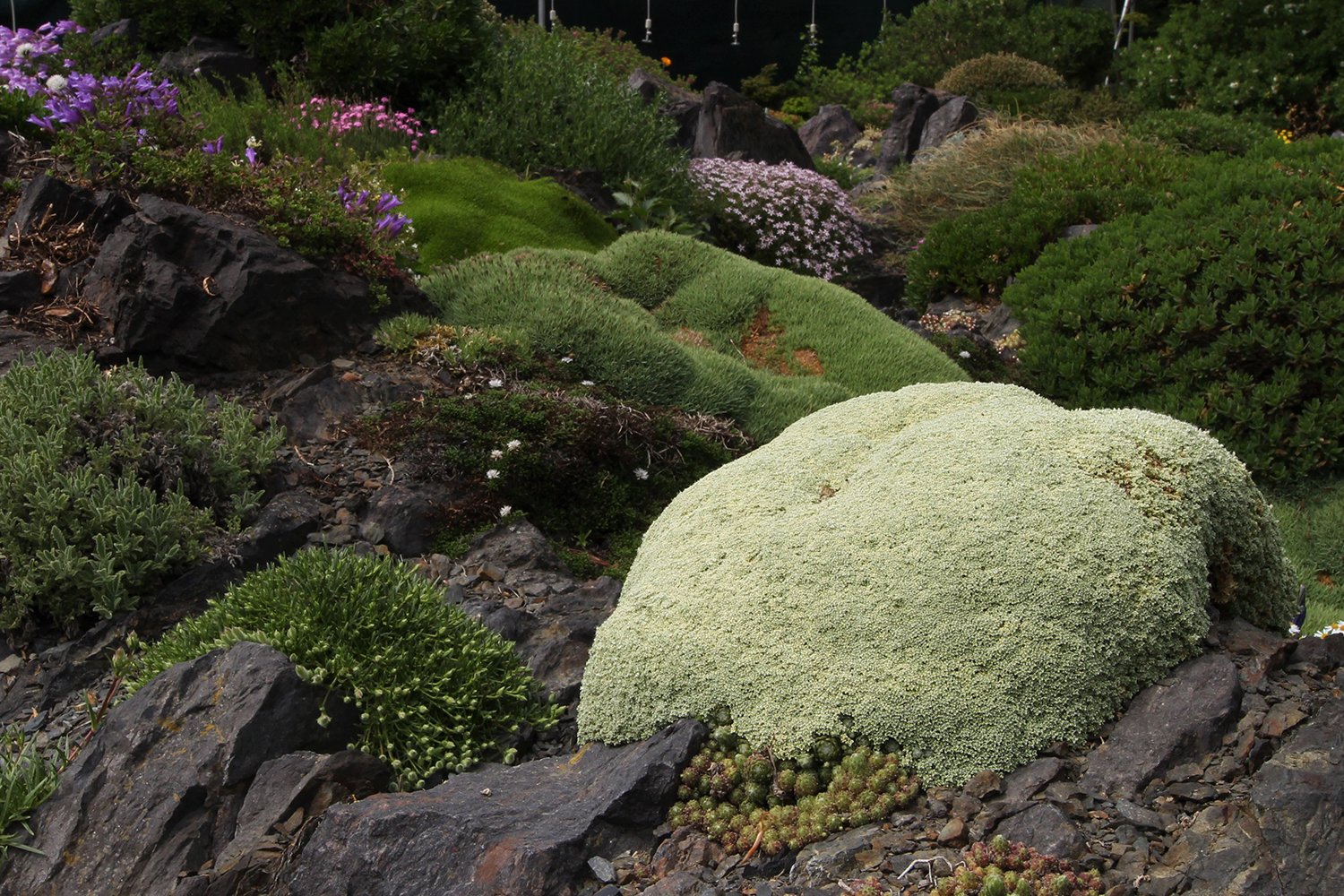
A covering of stone and gravel, also called topdressing, on a crevice garden ensures that less water is lost by evaporation, so the air just above the surface is drier than air above open soil (though this is less true with porous stones). Surface stones absorb ground and solar heat, speeding up the surface drying time after rain. A warm and dry surface also helps plant tissues ripen more quickly and better harden off in preparation for winter cold. Rocks and topdressing also ensure that new stems of these plants, which are susceptible to fungus and rot, are always protected from the moisture of the soil.
Dark-colored stones absorb more heat than light stones. Because all the stones in a crevice garden are partially buried in the soil, their color will affect the soil temperature and can be used to push a microclimate warmer or cooler. A warm rock surface in a cool climate will help plants finish their vegetative cycle, ripening and hardening their tissues for winter.
Plant leaves generally don’t burn against rocks, as it’s only the very paper-thin surface that reaches scalding temperatures in a hot climate and this heat is dissipated by the rock and leaf’s shadow.
Rocks release heat at night, and with clear skies, this infrared heat dissipates measurably faster. If there is humidity to meet this coolness by morning, water from the atmosphere can condense on exposed and buried rock surfaces. Porous stones such as limestone, sandstone, and tufa also release water, cooling their surfaces and the soil pinched between them by evaporative effect, allowing plants that want cooler conditions to survive in a hot climate.
Open-style crevices look like the spaces between the plates in a dish-drying rack. The rocks act as a more effective temperature conductor between the air and soil than a perfectly flat surface, just like the fins on a hot-water radiator. They also cast shadows on the soil and plants growing down in their nooks, as well as trapping and absorbing more surface water because they create a very textured surface.
Generally, the mass of stones in a crevice garden buffers roots and soil from diurnal and seasonal temperature changes. It also strongly influences water or sun exposure in seasonal ways. Sometimes what we observe in the garden evades our understanding because the physical interplay of water and temperature around rocks can be so complex: why did this plant survive, defying expectations, and why did that plant die?
Below ground
Welcome to the rhizosphere, where roots live. Rock garden chasmophytes, or ‘abyss-plants’ from the Greek, often don’t know what to do with too much soil. Such plants have evolved to grow in even the tightest of fissures, where water is drawn more deeply into the rock through capillary action.
In open soils, ground moisture is drawn upwards like a wick if the surface dries, because of soil capillarity. A soil merely covered in gravel will insulate the soil below from moisture-robbing air and warmth above. In a crevice garden, the soil surface is completely covered with larger stones, so even less soil surface area is exposed to evaporation, which promotes a steady downward trajectory for water towards the cool and moist soil below. In hot climates, this reduces the need for irrigation, helping to maintain a consistent water reserve below. If the rock is limestone or sandstone, which have density and capillarity stronger than the soil, a small amount of water is drawn through tiny pores into the stone. This may be one reason why we find roots fanned out against the surface of these stones.
Furthermore, in some conditions where soils minutely expand and contract with moisture and temperature, paper-thin fissures can form between the buried rock and soil, which can act as direct pathways for air and moisture. This contact zone creates another phenomenon to attract roots: if the stone is colder than the humid air in the soil, water will condense and gather on the buried stone surface.
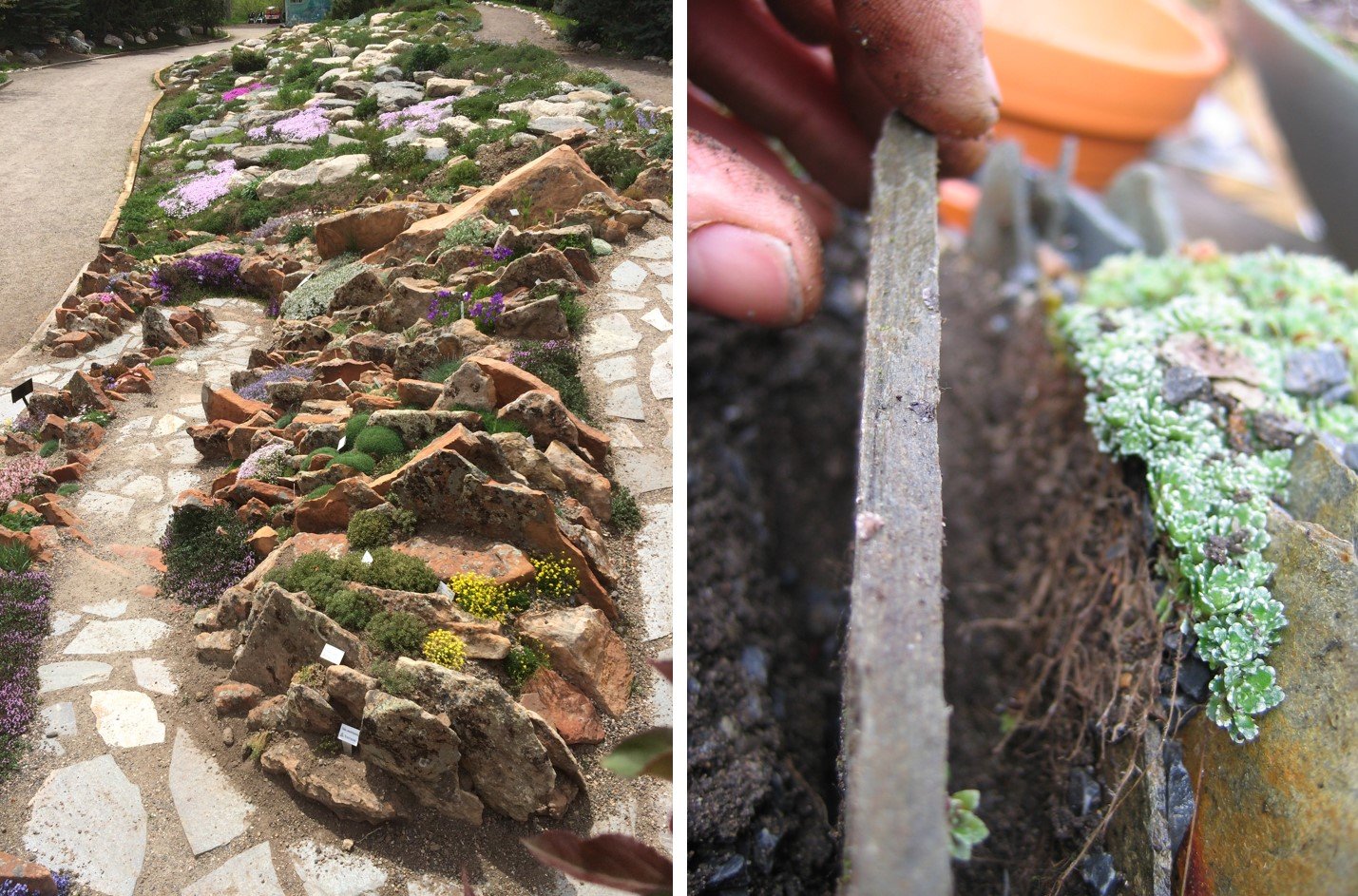
Right: The crevice below ground with roots fanned against buried rock. Photo: Paul Spriggs
Light, open soils
While the rocks and top-dressing encourage dryness on the surface, a light, open soil in the crevice garden will buffer against saturation. Roots breathe air underground just as leaves breathe above ground, and they will drown if the soil remains soggy for too long. An uninterrupted downward movement of water draws air in behind it, bringing more oxygen down into the rhizosphere. The soil must retain some moisture for the plant’s use, but the quicker the medium drains, the longer the period of aeration, allowing plants to breathe properly. A loose soil also resists compaction, preserving its larger air spaces in the long term.
Unless the stones are very large and deeply buried, the plants will eventually bypass the actual crevice as they grow downward and have access to open soil below. The depth of crevices in our gardens is limited by the capability of human hands moving the rocks; most saxatile plants that are only inches tall would grow roots several feet deep in a thin crevice if you could set rocks of that size.
In gardens and in nature, roots do indeed reduce the moisture of the soil as they use it. Then, the phenomenon of capillarity causes the water to oppose gravity and move upward toward the roots from below. In gardens, the soil below the rocks may supply moisture to soil within a crevice.
Aspects
We can achieve a lot by working with the microclimates within any given climate. For example, in the Northern Hemisphere, the north side of a building is the cool, shady side; the south side is the hot, sunny side; the east-facing walls will receive cool morning sun; and the west will enjoy the warm evening sun. The same applies to a rock garden. An outcrop is essentially a mini-mountain, with microclimates that are affected by the cardinal directions they face. A steep stone on an east–west axis can provide a nice shady shelter from the midday sun, while a plant that wants to bake will be happier on the other (south) side of that rock.
Making an aspect-borne microclimate is like creating a tiny foreign country in your garden, pushing growing conditions closer to a plant’s homeland than your local climate typically provides. You might use the high and dry south-facing aspect for cacti like Escobaria, and the low, cool, and moist north aspect for alpines such as Gentiana. Eastern faces favor cool-blooded plants, such as most alpines, which vegetate in cool times, and warm faces favor warm season plants, for example salvias or delospermas, which often wait until summer to put on growth and flowers.
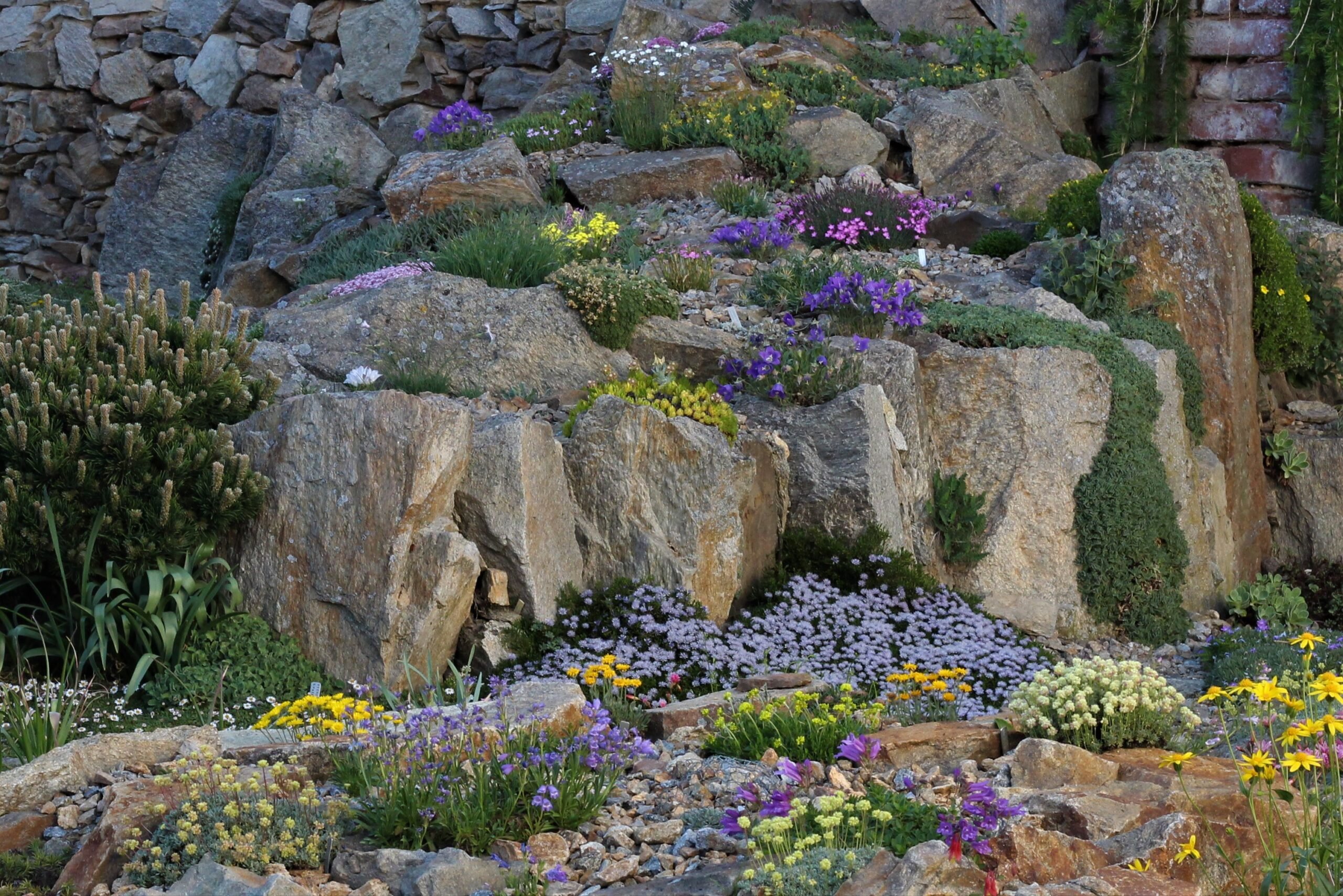
Counterintuitively, less hardy plants can benefit from being planted on a northern slope because it will cool sooner in autumn, encouraging them to harden-off more quickly in preparation for winter. Also consider that a very steep south face, which will receive the low winter sun head-on, will actually receive reduced summer midday sun. An eastern exposure protects plants from brutal afternoon summer sun, and in snowy climates the shadow cast to the north side of a house can create the conditions needed for a protective snow cover, which may create remarkably strong overwintering conditions for alpines and even tender succulents. A good north position can accommodate plants that might have otherwise needed additional moisture or conifer boughs laid over them as insulation. The variation is so strong that the sunniest to the shadiest microclimates of a crevice garden often differ in surface temperature by 11°C (20°F), or two USDA plant-hardiness zones. Since rock garden plants tend to be small and ground-hugging, that difference in surface temperature is all they need to thrive.
It’s not nature, though
To grow plants from an exotic place, we can approximate the effect of where they are from and compensate for things we can’t change. The experimental gardener will research the plants’ homeland, irrigate, choose an aspect, provide cover in winter and modify soils to try to create optimal growing conditions. In the end, plants are remarkably adaptable and will meet us halfway.
Crevice gardens can even work for plants that don’t naturally grow in crevices, but require dryness or drainage. Likewise, there are some shallow-rooted or succulent plants, even saxatile plants, that do not grow any better in a crevice. Others are simply wildly adaptable, taking well to rich, composted garden soils despite originating among rocks in nature.
The modern crevice garden explores the extremes of compromise between pure soil and pure rock. How tightly can we pack rocks together and still call it gardening? Can we still weed a paper-thin crack? This wonderful madness pushes the edge of what is a plantable space, and inspires us to test the boundaries of what we call soil.
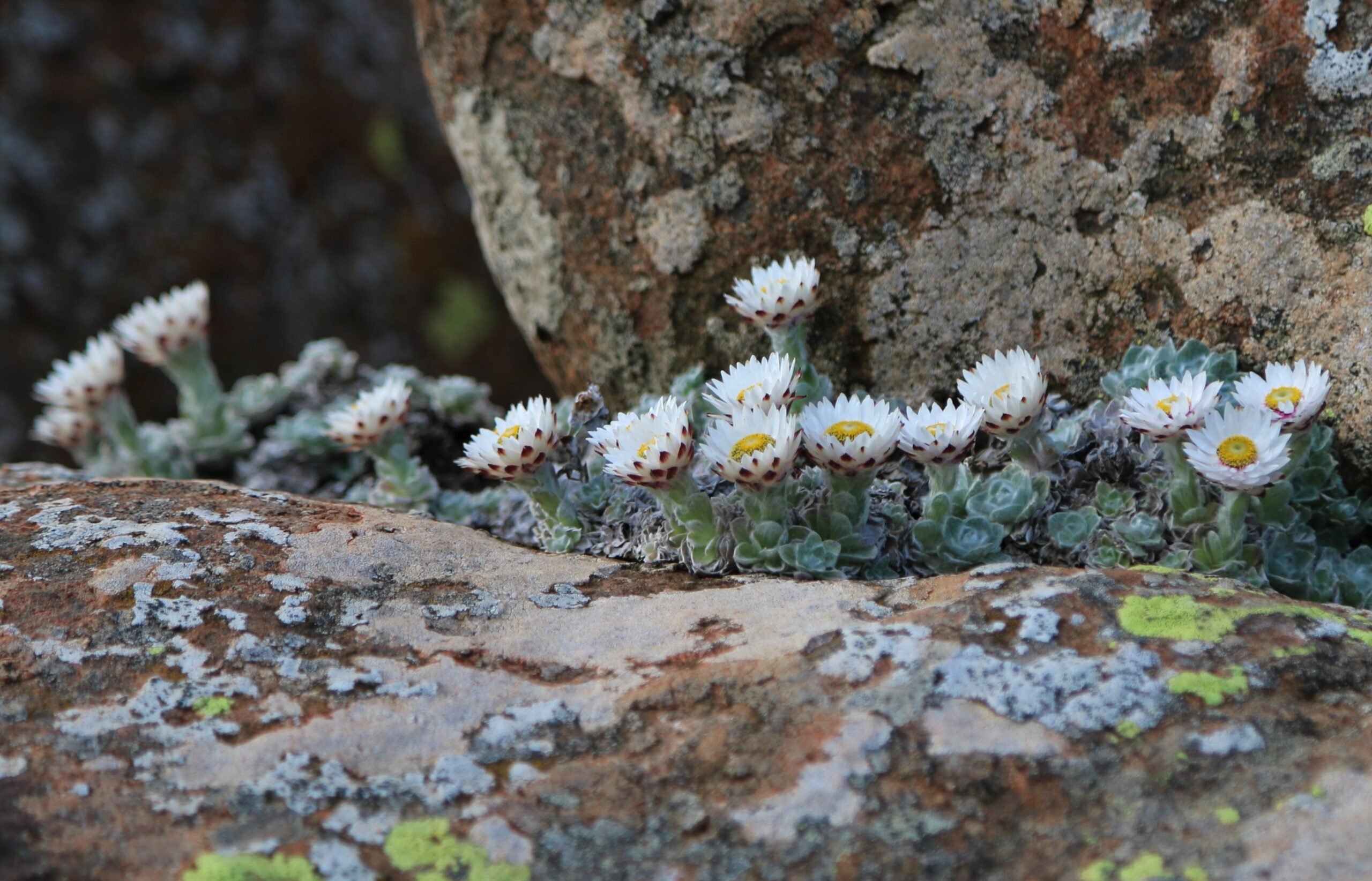
Advantages of the crevice
Crevice gardens are the best way to cultivate the widest range of saxatile plants, providing drainage for wet climates and deep root-runs for dry climates. These gardens take some effort to build, but properly designed, they pay off with less and lighter maintenance. The multi-dimensional nature of a crevice garden also offers bounty, doubling or tripling the plantable space. For example, a circular garden on flat ground allows only 1sq m (11sq ft) of planting space. A hemisphere raised out of that same footprint has double the area. Adding texture to the hemisphere could triple the surface area, in the way that a sheet too large for a bed is wrinkled and rippled. The raised surface also brings small plants closer to the viewer.
Each part of the garden, especially if built to maximize its microclimates, can accommodate plants with differing needs just a short distance from one another. You can even use pockets of specific soil mixes to accommodate specific plants in each space, recreating conditions from the far reaches of Earth and successfully inviting an engaging international cast of rare and gorgeous plants to grow in their respective nooks. The welcome mat doesn’t just extend to plants – wildlife species that need a drier niche, a clear vantage point, or a warm surface to bask on are attracted to a rocky outcrop. Crevice gardens also provide a tool for study and conservation by universities, scientific institutions, and botanical gardens. The ability to grow edaphic endemics – plants that are restricted to one place and one soil type in nature – may prove critical for ex-situ conservation of these species, replenishment of wild populations, or preservation of species in the event of extinction in the wild.
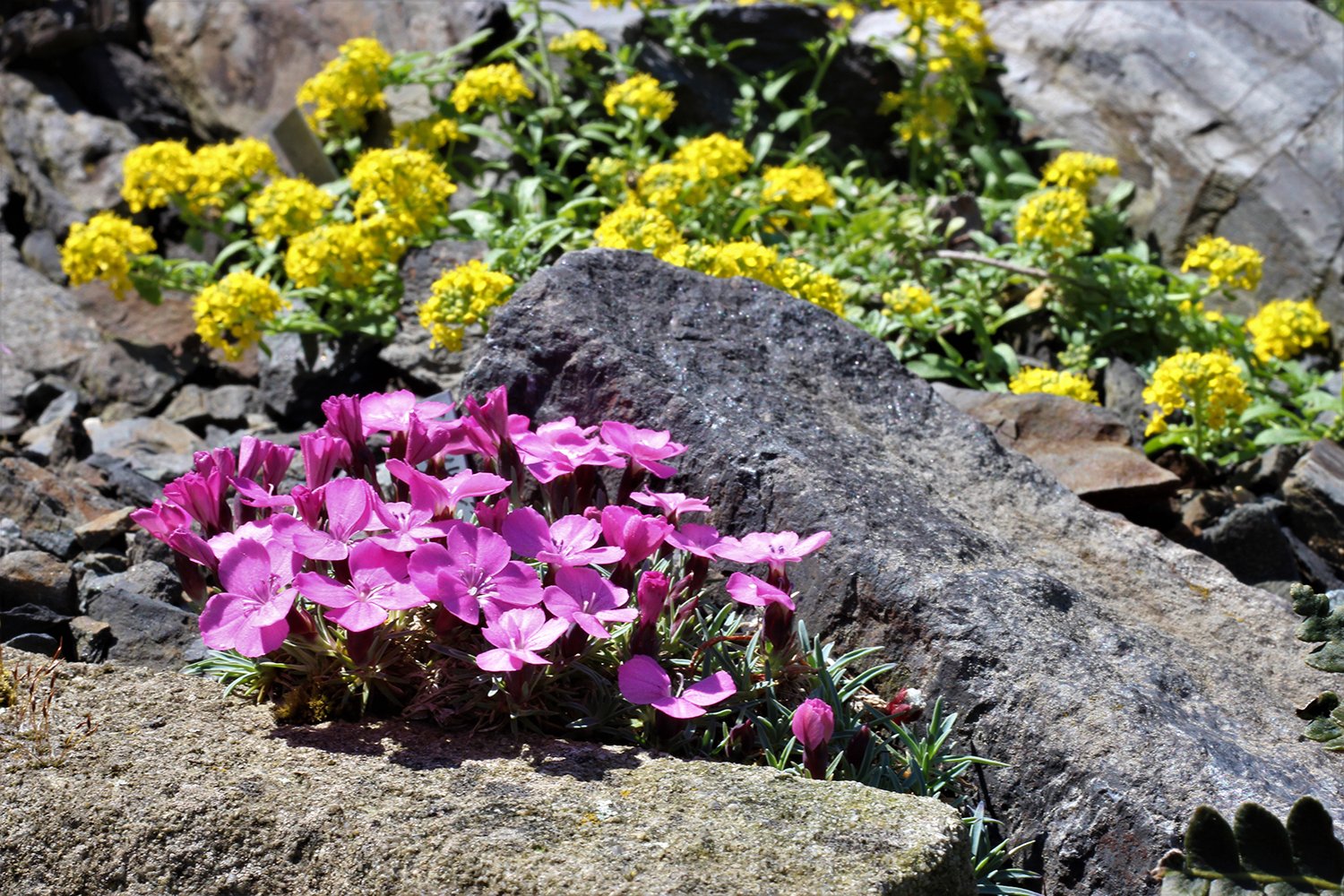
Two factors drive scarcity of water for gardening at the moment: population increases in already dry areas (such as the interior of western US) and increasing dryness and heat in those areas due to climate change. Crevice gardens offer another design option in dry zones and will continue to shine as an alternative to raised beds and retaining walls, serving the same function while also offering plantable spaces. Charismatic plants come and go with the seasons and their own short lives, but rocks remain for generations. In the crevice garden, we can see the pairing symbolize the story of life on Earth.
Share:
Social Media
Garden Futurist Podcast
Most Popular
Videos
Topics
Related Posts
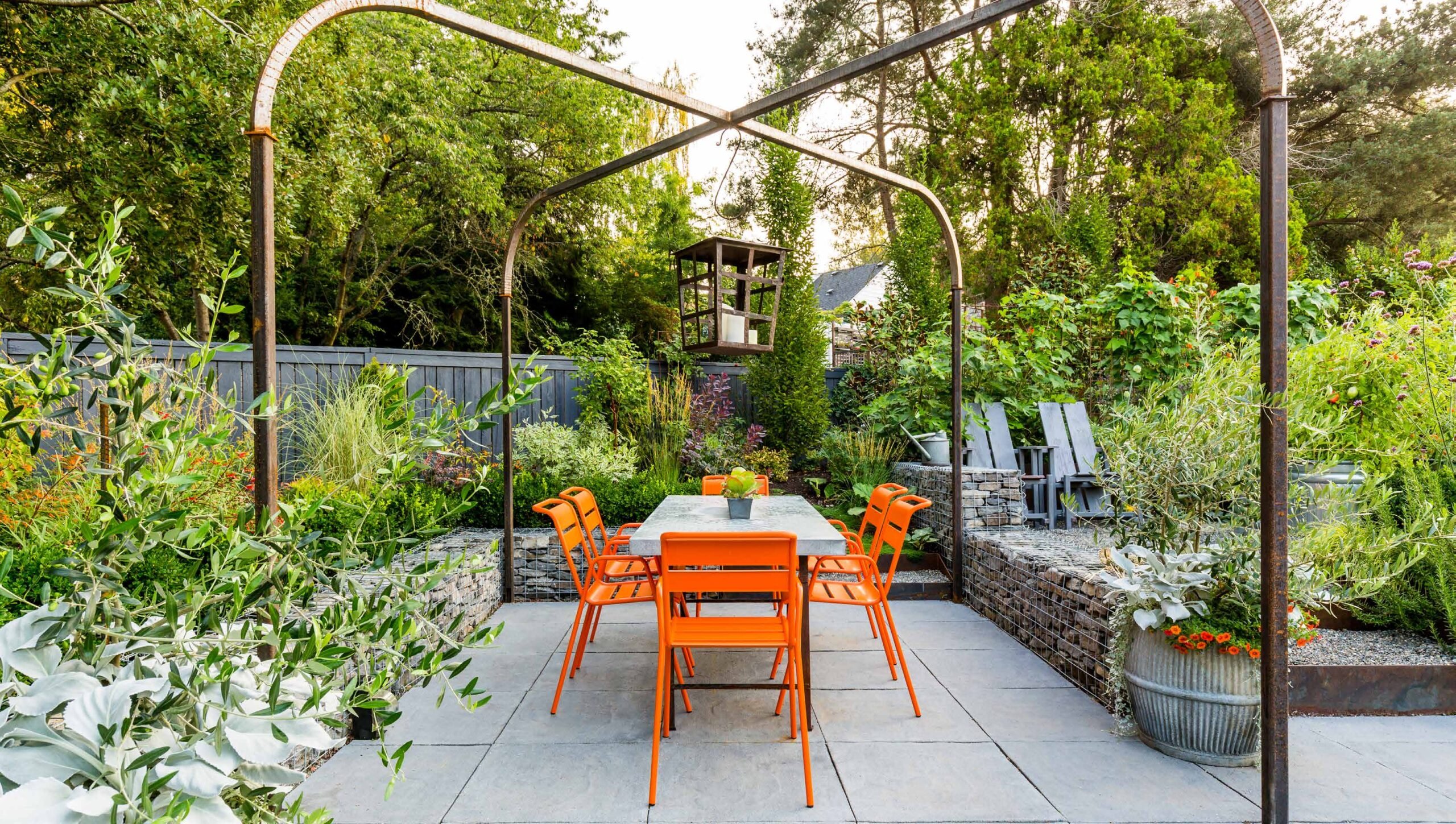
Design Futurist Award Announced: Committee Shares Vision
March 8, 2023 At Pacific Horticulture, we believe that beauty can be defined not only by gorgeous plants and design, but also by how gardens
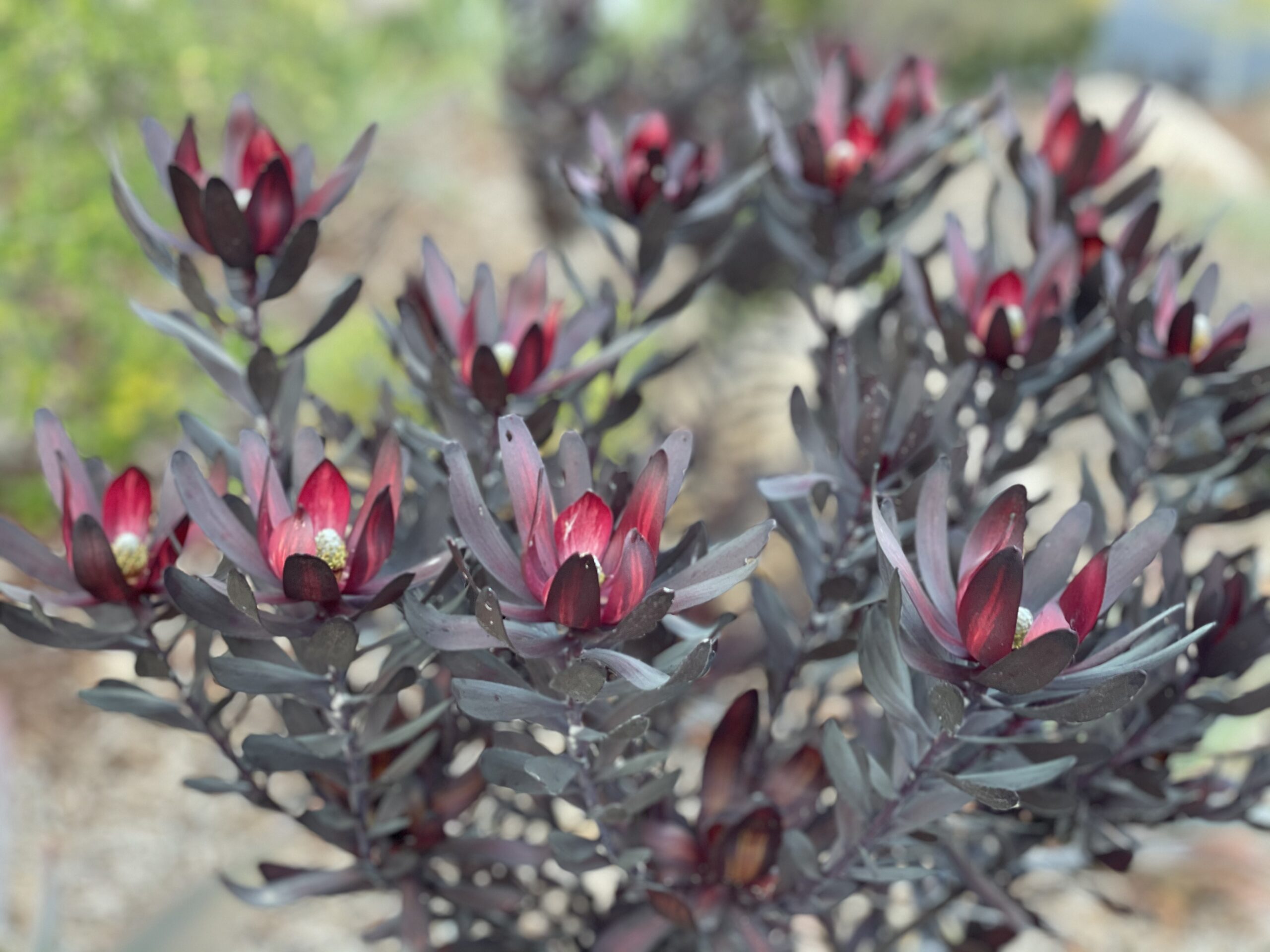
Expand Your Palette: Waterwise Plants for your Landscape
There’s nothing more thrilling to plant lovers than discovering new plants to test in the garden. Here in the southernmost corner of California, we have

Portland Parks’ “Nature Patches”
Winter 2022 Nature is so beautiful when left to its own devices, yet crisply manicured lawns remain a status symbol. This is true in Portland,
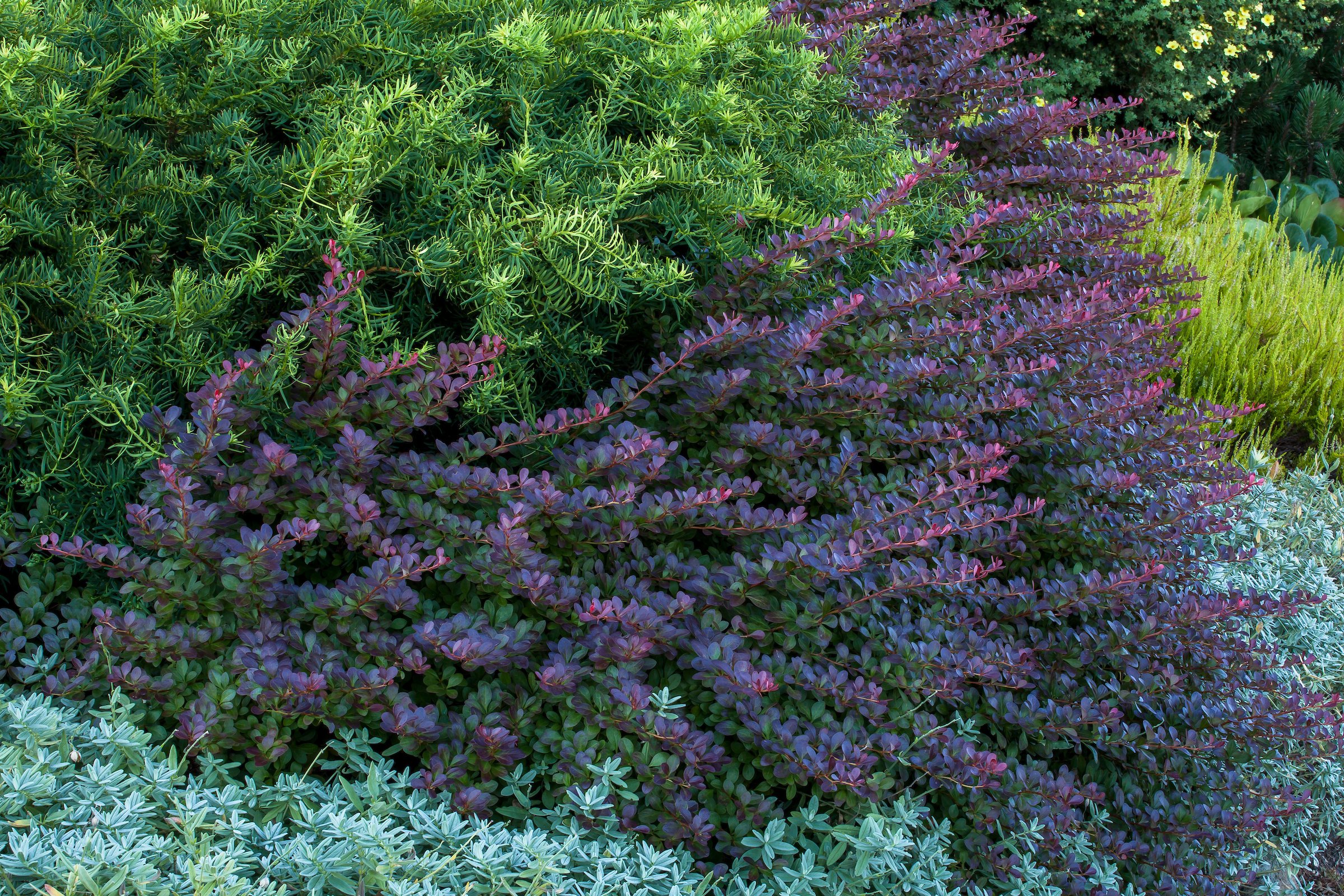
Readily Available Low-Water Plants for a Warming Climate
Fall 2022 Al Shay is the manager of the Oak Creek Center for Urban Horticulture on the campus of Oregon State University (OSU) in Corvallis.










Responses